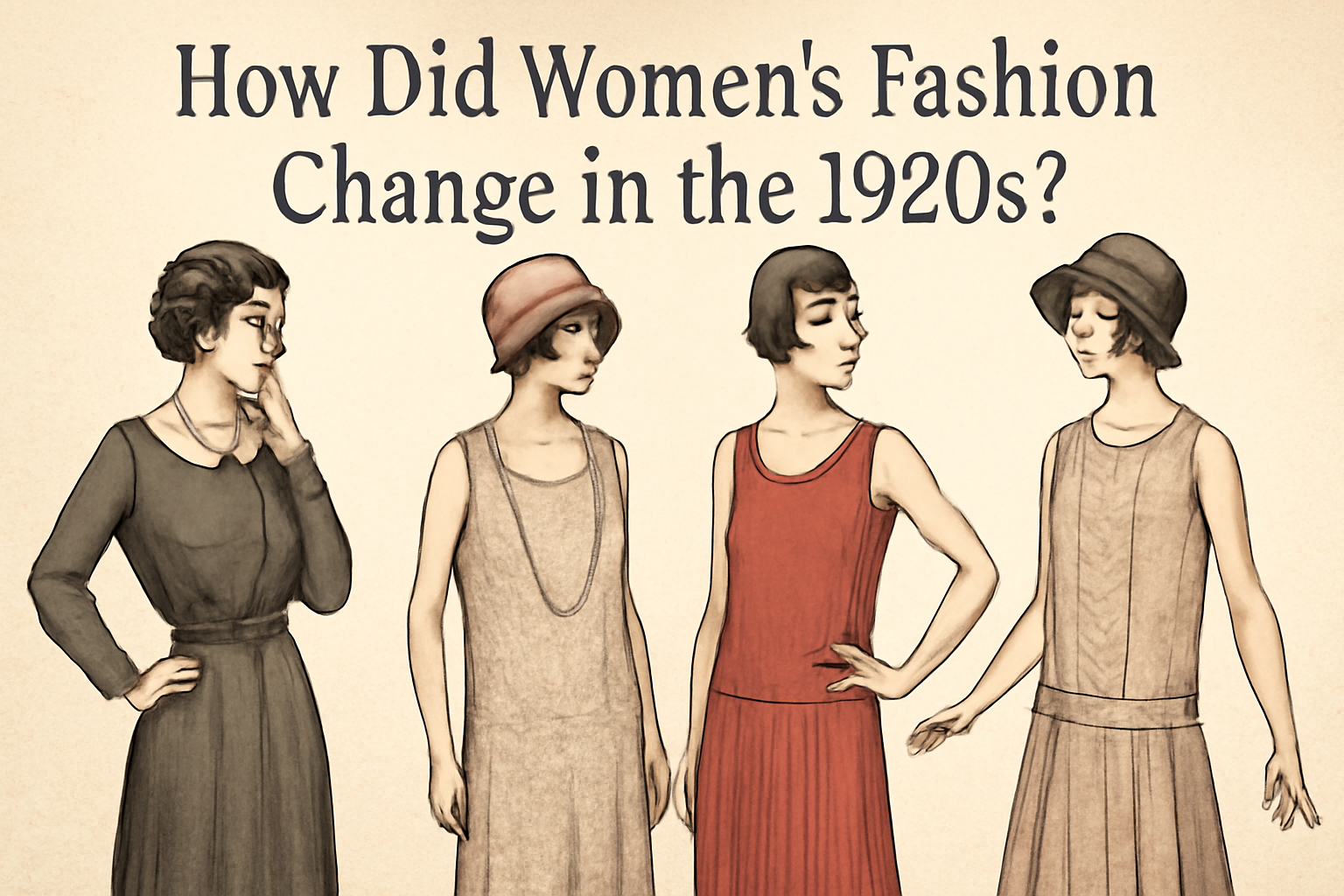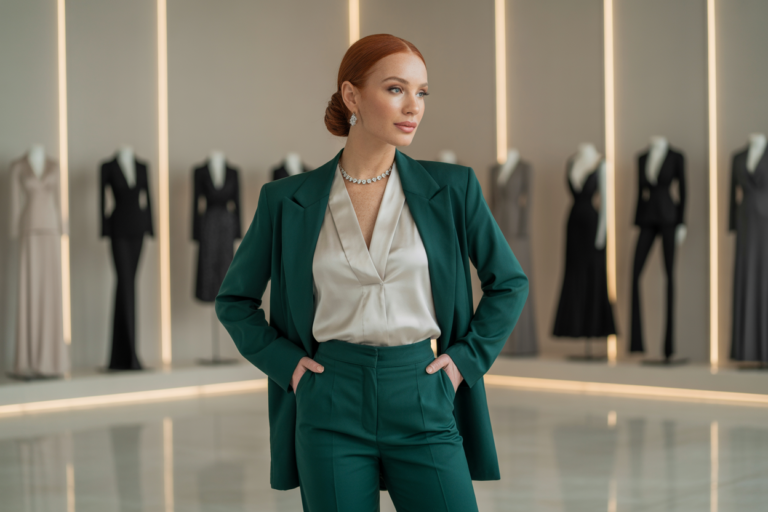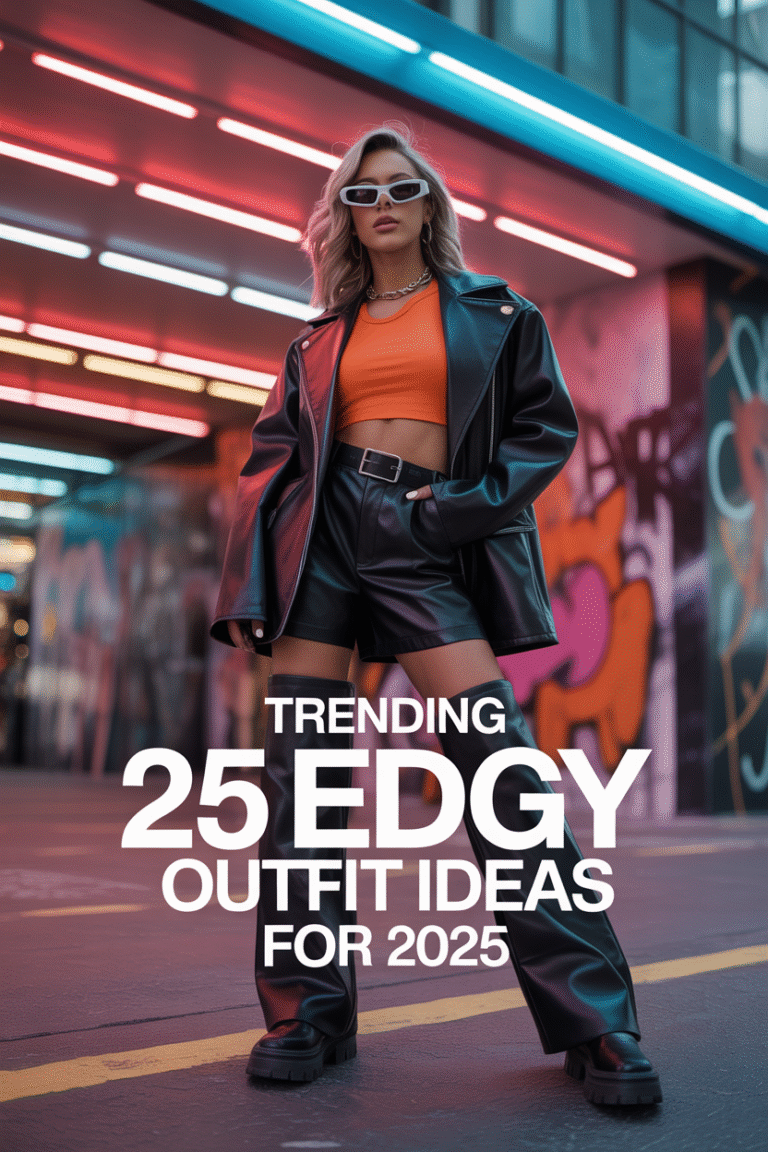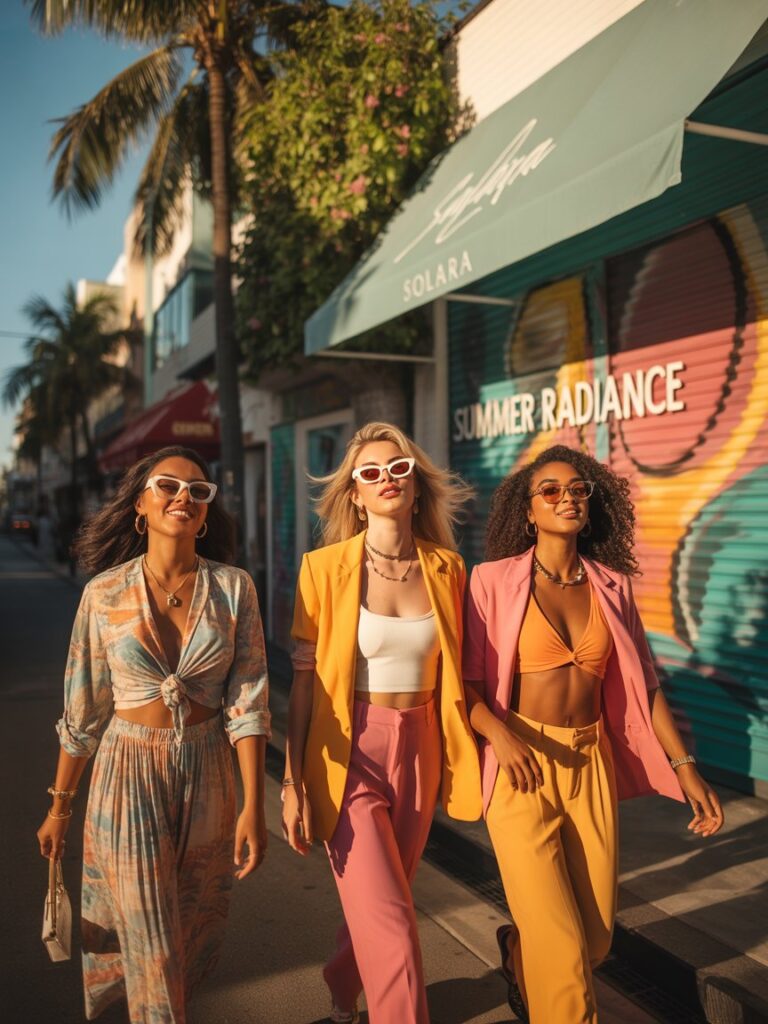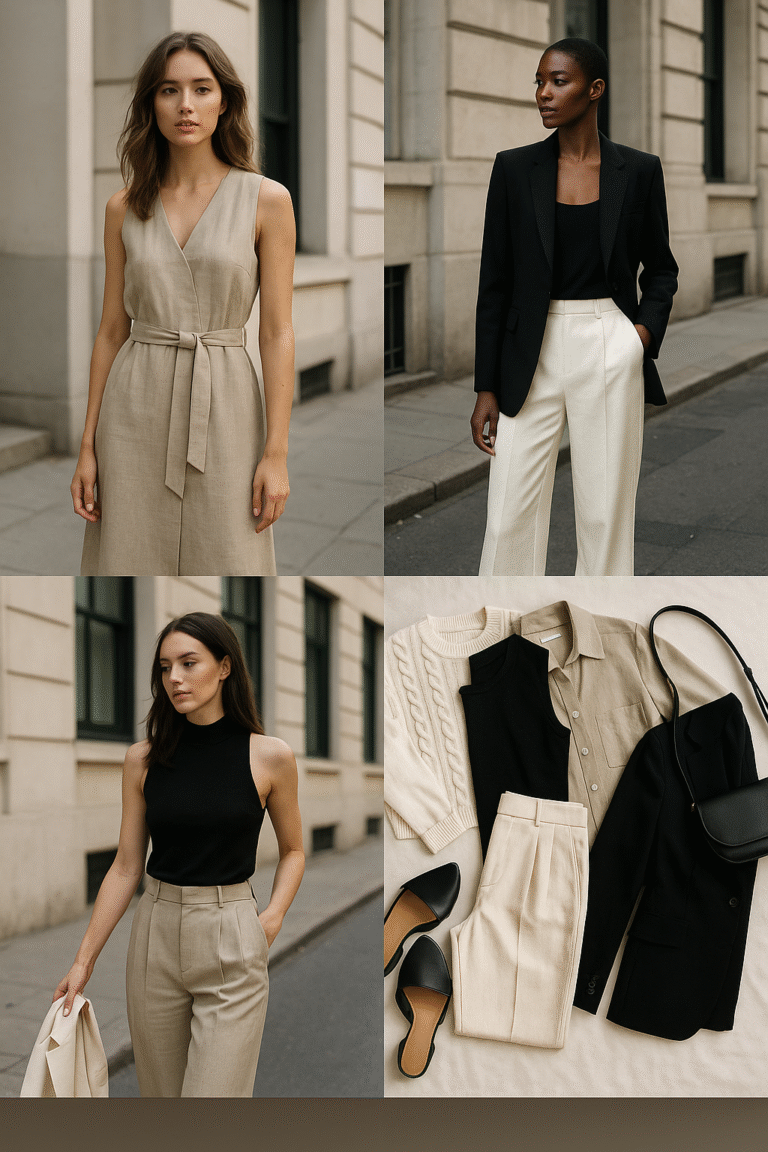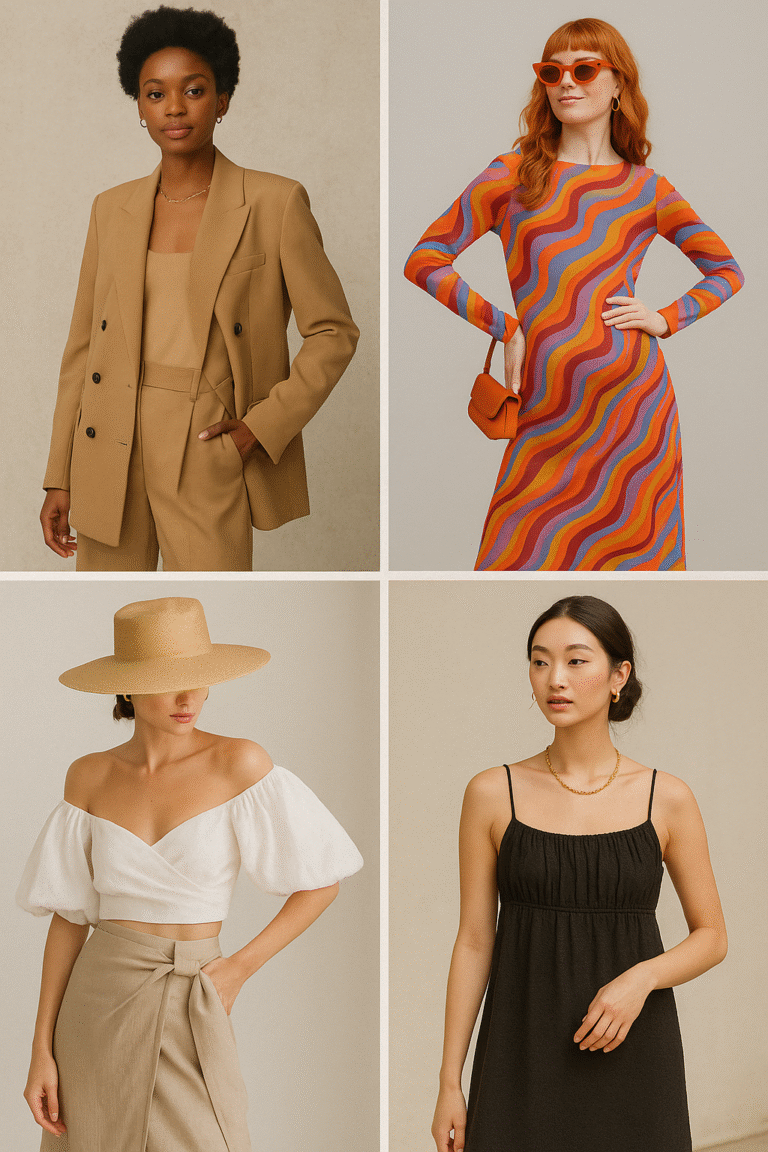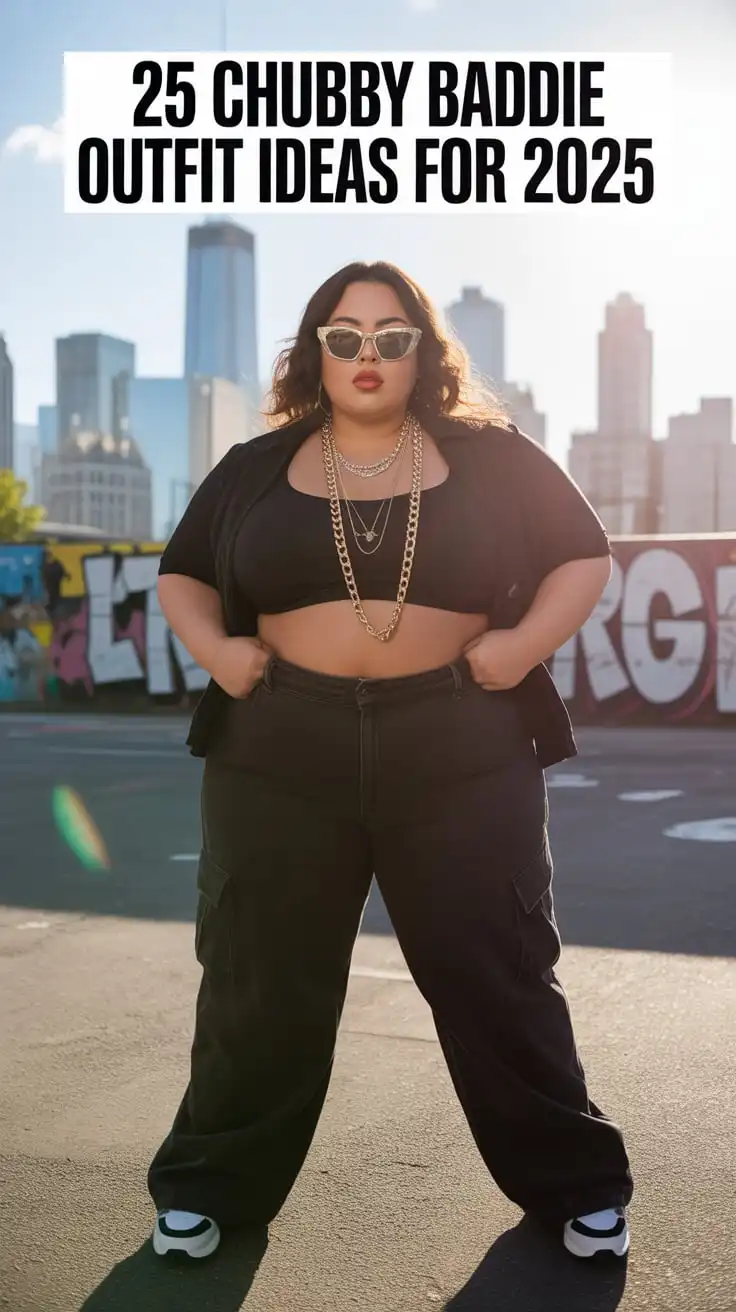Introduction: The Bold Evolution of Women’s Fashion in the 1920s
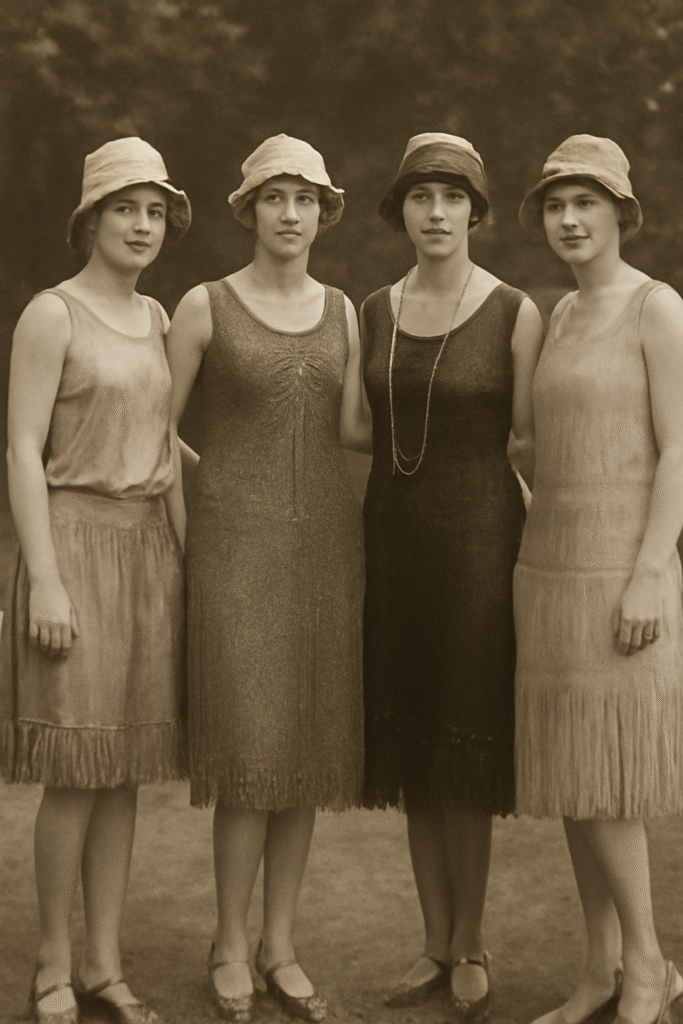
The 1920s, often referred to as the “Roaring Twenties,” marked an era of significant change and social upheaval. This transformation wasn’t just political and economic—it was also cultural, especially in fashion. Women’s fashion in the 1920s saw an unprecedented departure from the past, driven by a desire for freedom, individuality, and self-expression. This article explores the groundbreaking changes in women’s fashion during this vibrant decade.
1. The Rise of the Flapper Dress: Embracing the New Woman
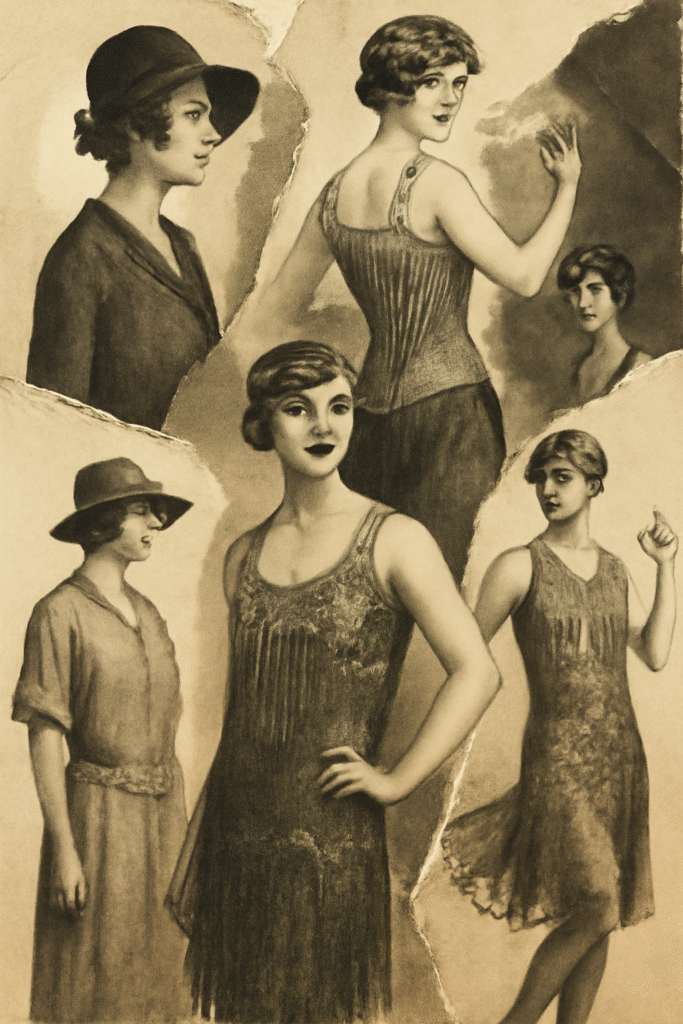
One of the most iconic symbols of 1920s fashion is the flapper dress. These dresses, often knee-length with dropped waists, were a stark contrast to the corseted, structured clothing of previous decades. The loose, straight silhouettes allowed women more movement, symbolizing their increasing independence and rebellion against traditional norms.
Key Features of the Flapper Dress:
-
Dropped Waist: A departure from the traditional hourglass figure, the dropped waistline created a more boyish shape.
-
Fringes and Beads: Dresses were often adorned with beads and fringes, adding a playful and dynamic element that matched the lively Jazz Age spirit.
-
Short Hemlines: Flappers popularized shorter hemlines that exposed more of the legs than ever before, signaling a new era of boldness and freedom.
2. Bobbed Haircuts: A Symbol of Rebellion
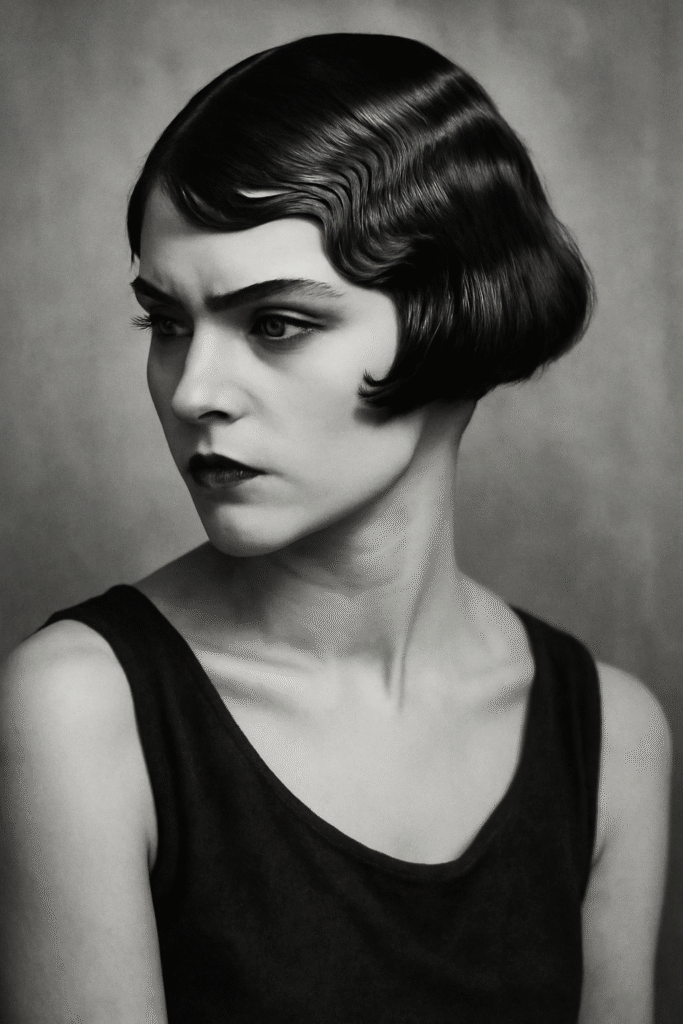
In the 1920s, women’s hairstyles also underwent a radical transformation. The long, flowing locks that were once considered the epitome of femininity were replaced by the bobbed haircut. The bobbed hairstyle—short, sleek, and often styled with finger waves—became a symbol of a modern, independent woman who rejected the constraints of traditional femininity.
The Impact of Bobbed Hair:
-
Freedom and Modernity: Bobbed hair symbolized a break from the Victorian ideals of femininity. It was easier to maintain and required less time than the elaborate hairstyles of previous decades, aligning with the growing push for women’s independence.
-
Influence of Celebrities: Stars like Louise Brooks and Clara Bow popularized the bobbed look, making it a cultural trend.
3. The Flapper Look: Accessories and Footwear
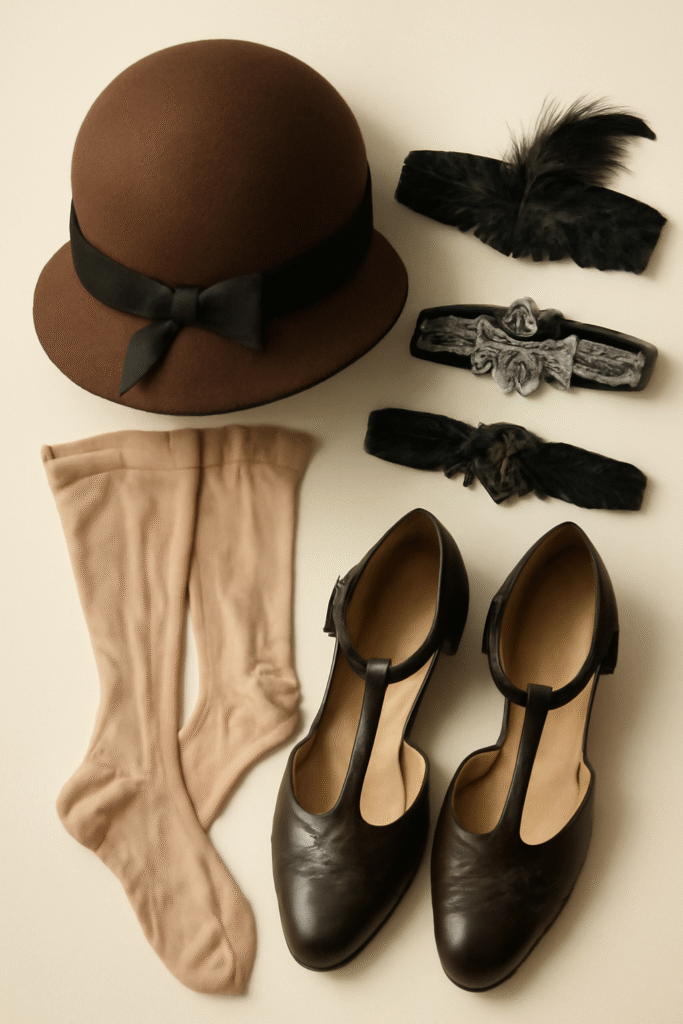
The 1920s were not only about dresses and haircuts but also about the accessories that completed the look. Women’s fashion in the 1920s was all about attention to detail, and accessories played a pivotal role in completing the flapper ensemble.
Key Accessories:
-
Cloche Hats: These close-fitting, bell-shaped hats became a signature part of the flapper look, often worn low over the forehead, complementing the bobbed hairstyle.
-
Tiaras and Headbands: Decorative headbands adorned with feathers or jewels became popular, adding a touch of glamour.
-
Stockings: Silk stockings, often held up by garters, became a fashionable item, with women opting for darker shades to match the bold styles of the time.
-
Footwear: Shoes were an essential part of the flapper look, with T-strap and Mary Jane-style shoes becoming iconic choices. These shoes were not just fashionable but practical for dancing, which was a central part of 1920s culture.
4. Fashion and Feminism: The Liberation of Women
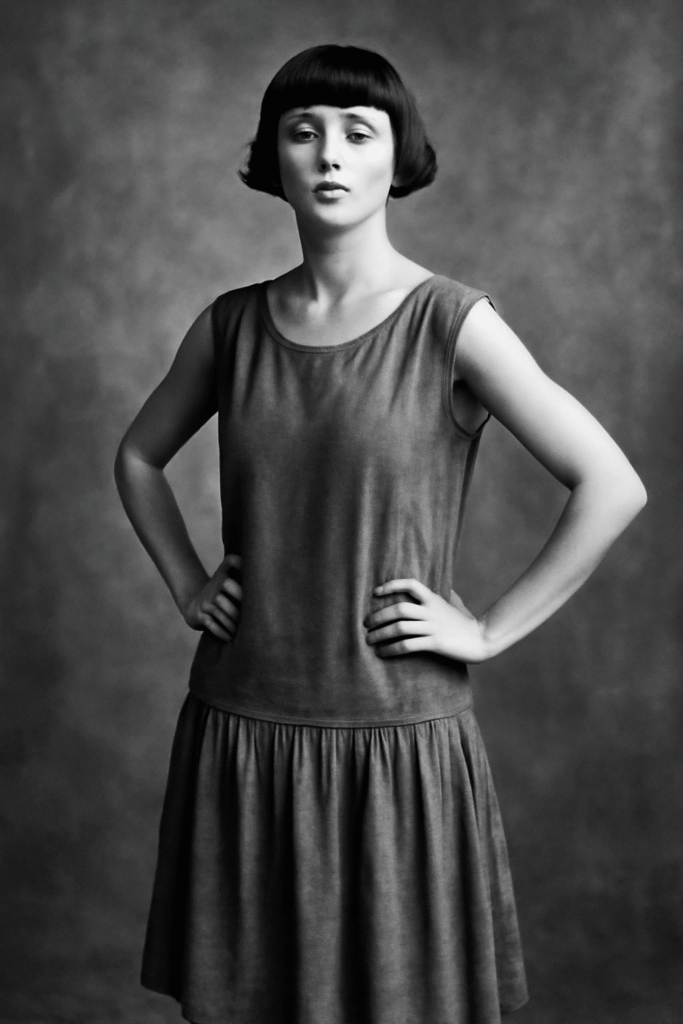
Women’s fashion in the 1920s was directly influenced by the feminist movements of the time. The suffragist movement had secured women the right to vote in many countries, and this victory marked the beginning of a broader shift toward gender equality. The clothing of the time reflected this changing social landscape, as women embraced styles that gave them more freedom and autonomy.
Fashion and Women’s Liberation:
-
The Androgynous Look: The looser, straight-line clothing of the 1920s created a more androgynous silhouette, which challenged traditional gender norms and celebrated a new vision of femininity.
-
Practicality Meets Style: Women’s fashion became more practical, with clothing designed to allow more mobility. This was in part due to the increasing participation of women in the workforce and public life.
5. The Influence of Art Deco on Women’s Fashion
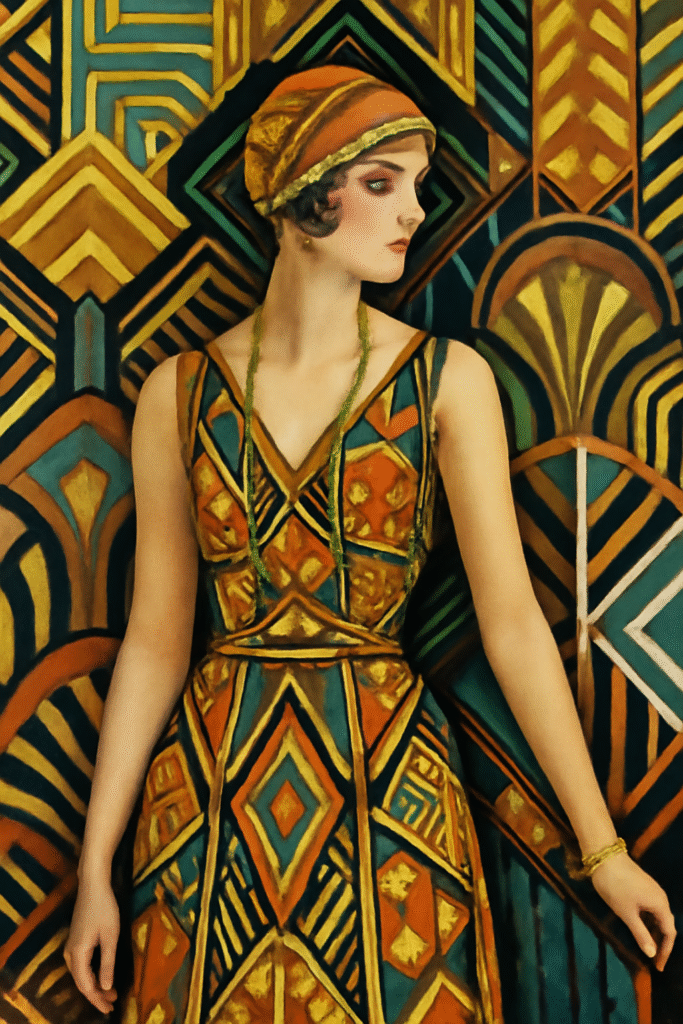
The Art Deco movement, which emerged during the 1920s, had a significant impact on fashion. Known for its bold geometric shapes, luxurious materials, and clean lines, Art Deco influenced not only architecture and art but also fashion.
Art Deco Influence on Fashion:
-
Geometric Patterns: Dresses, accessories, and fabrics featured bold, geometric patterns inspired by Art Deco designs.
-
Luxurious Fabrics: Fabrics like satin, silk, and velvet were commonly used to create sophisticated, high-fashion looks, often embellished with sequins or embroidery.
6. The Impact of Hollywood on 1920s Fashion
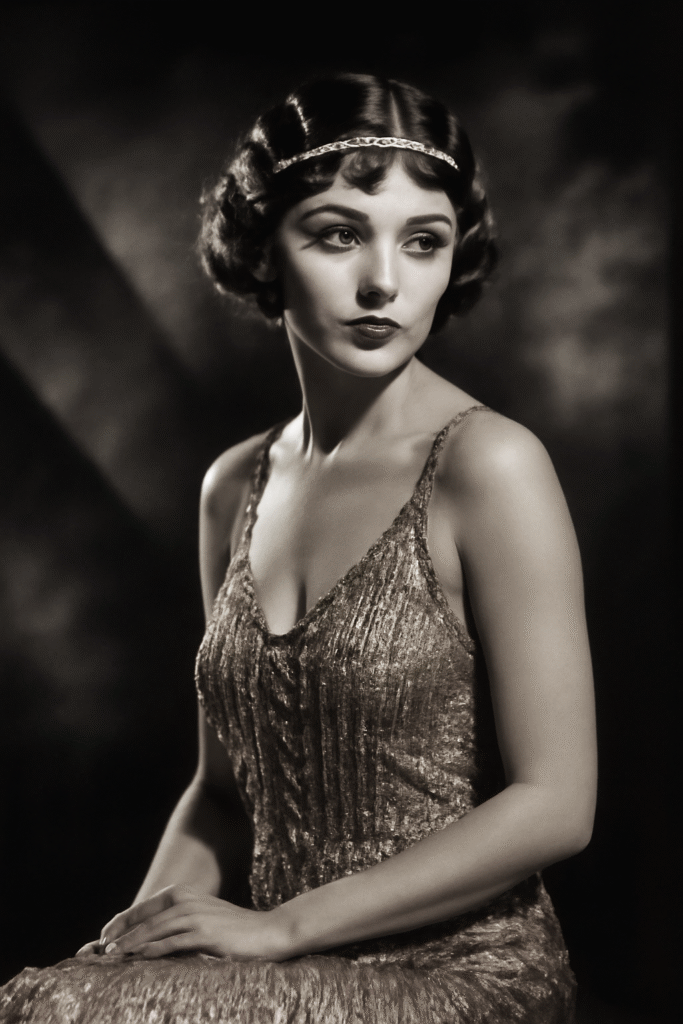
Hollywood played a crucial role in shaping women’s fashion during the 1920s. Silent film stars like Clara Bow, Greta Garbo, and Marlene Dietrich were fashion icons of their time, influencing how women across the world dressed.
The Hollywood Influence:
-
Movie Stars as Trendsetters: Movie stars showcased the flapper look on screen, and women across the world sought to emulate their glamorous, modern styles.
-
Glamour and Elegance: Hollywood glamorized the idea of a sophisticated, chic woman, which was reflected in the fashion of the time, with women seeking to replicate the elegant styles seen on screen.
Conclusion: A Decade of Fashion Revolution
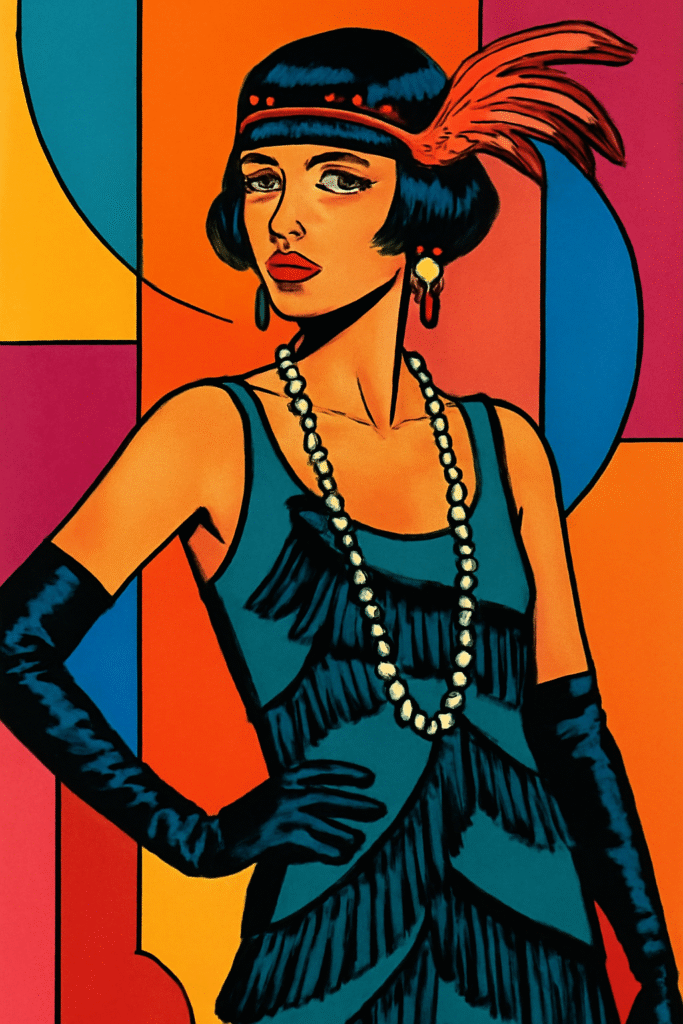
1920s Fashion Trends for Women was revolutionary, reflecting broader social changes, including women’s increased independence, the rise of feminism, and the influence of new artistic movements like Art Deco. The flapper dress, bobbed haircuts, and a bold embrace of modernity and freedom defined the decade and created a lasting impact on how women dressed in the years that followed.
The 1920s marked the beginning of a new era of fashion, where comfort, practicality, and individuality took precedence. As we look back, the women of the Roaring Twenties continue to inspire modern fashion, demonstrating how fashion can be both a reflection of and a catalyst for social change.

